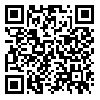Sun, Jul 27, 2025
[Archive]
Volume 11, Issue 32 (2019)
JMED 2019, 11(32): 79-105 |
Back to browse issues page
Download citation:
BibTeX | RIS | EndNote | Medlars | ProCite | Reference Manager | RefWorks
Send citation to:



BibTeX | RIS | EndNote | Medlars | ProCite | Reference Manager | RefWorks
Send citation to:
Safarnavadeh M, Ebrahimpour Koumleh S, Jafari S. Desirable Status of the Dental Curriculum Based on the National Requirements of Iran and International Experiences. JMED 2019; 11 (32) :79-105
URL: http://edujournal.zums.ac.ir/article-1-1042-en.html
URL: http://edujournal.zums.ac.ir/article-1-1042-en.html
1- Member of Academic Board of Education Department Ministry of Health, Treatment and Training, Secretariat of Technical and Dentistry Training Council ,Tehran, Iran
2- Department of Educational Science, Science and Research Branch, Islamic Azad University, Tehran, Iran
3- Department of Oral Medicine, School of Dentistry, Shahid Beheshti University of Medical Sciences, Tehran, Iran ,soudehjafari@yahoo.com
2- Department of Educational Science, Science and Research Branch, Islamic Azad University, Tehran, Iran
3- Department of Oral Medicine, School of Dentistry, Shahid Beheshti University of Medical Sciences, Tehran, Iran ,
Abstract: (14991 Views)
Background & Objective: Dentistry is one of the branches of medical sciences, which should change in response to the needs of the community in the third millennium. The present study aimed to determine the desirable status of the dental curriculum based on the domestic requirements of Iran and international experiences.
Materials and Methods: This was a qualitative, historical research. Using library studies and the analysis and interpretation of the obtained data, the dental curriculum and actual experiences of reputable universities were examined in Iran and some other countries. Following that, based on the theoretical arguments and empirical achievements of some reputable universities, the favorable status of the dental curriculum was investigated considering the domestic needs of Iran and international experiences.
Results: Through evaluation of the experiences of various universities in Iran and other universities across the world regarding the reform of the dental curriculum, it was concluded that the lack of a holistic approach, insufficient attention to the preventative aspects, separation of basic sciences education from clinical courses, lack of learning motivation in learners, and poor training of independent learners have urged the thorough review of the dental curriculum. The horizontal and vertical integration of the dental curriculum could enhance the current status of dentistry. Therefore, curriculum modification and reform should be focused on integrated approaches based on education combined with research, evidence-based dentistry, and introduction of new knowledge in the planning of the dental curriculum.
Conclusion: A favorable integrated curriculum for dental education is a program that develops the dental curriculum based on the academic field level, field of study level, and thematic program or course content level through deciding on the four elements of objectives, contents, methodology, and evaluation, as well as adherence to the four principles of simultaneous integration at the micro and macro levels, diversity of methods and multi-dimensionality, balance between the contents, and supplemented integration from within.
Materials and Methods: This was a qualitative, historical research. Using library studies and the analysis and interpretation of the obtained data, the dental curriculum and actual experiences of reputable universities were examined in Iran and some other countries. Following that, based on the theoretical arguments and empirical achievements of some reputable universities, the favorable status of the dental curriculum was investigated considering the domestic needs of Iran and international experiences.
Results: Through evaluation of the experiences of various universities in Iran and other universities across the world regarding the reform of the dental curriculum, it was concluded that the lack of a holistic approach, insufficient attention to the preventative aspects, separation of basic sciences education from clinical courses, lack of learning motivation in learners, and poor training of independent learners have urged the thorough review of the dental curriculum. The horizontal and vertical integration of the dental curriculum could enhance the current status of dentistry. Therefore, curriculum modification and reform should be focused on integrated approaches based on education combined with research, evidence-based dentistry, and introduction of new knowledge in the planning of the dental curriculum.
Conclusion: A favorable integrated curriculum for dental education is a program that develops the dental curriculum based on the academic field level, field of study level, and thematic program or course content level through deciding on the four elements of objectives, contents, methodology, and evaluation, as well as adherence to the four principles of simultaneous integration at the micro and macro levels, diversity of methods and multi-dimensionality, balance between the contents, and supplemented integration from within.
Article Type : Brief Report |
Subject:
Education
Received: 2018/05/21 | Accepted: 2018/12/22 | Published: 2019/03/17
Received: 2018/05/21 | Accepted: 2018/12/22 | Published: 2019/03/17
Send email to the article author
| Rights and permissions | |
 |
This work is licensed under a Creative Commons Attribution-NonCommercial 4.0 International License. |







